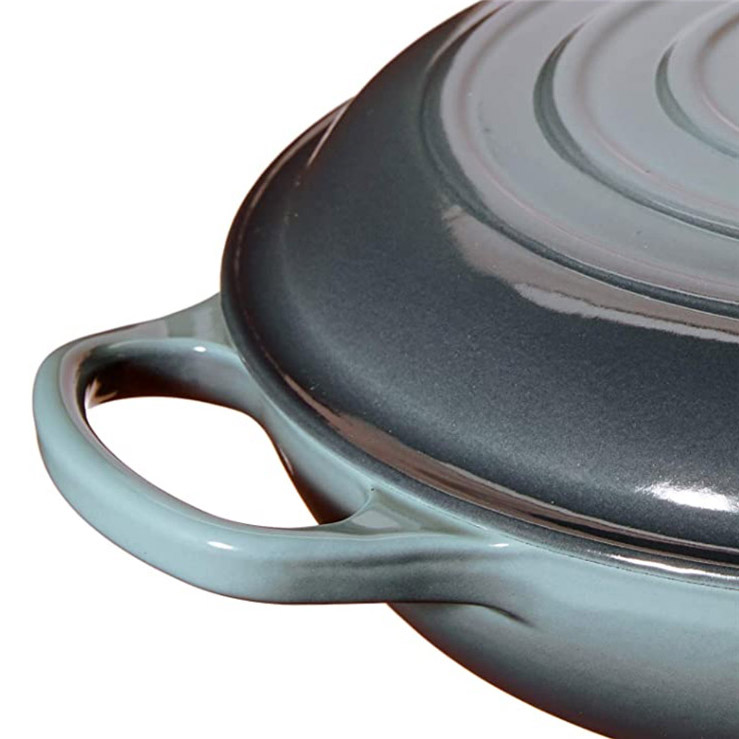- 150m Southwards, West DingWei Road, Nanlou Village, Changan Town, GaoCheng Area, Shijiazhuang, HeBei, China
- monica@foundryasia.com
Out . 21, 2024 13:58 Back to list
cast iron karahi pan manufacturer
The Art of Manufacturing Cast Iron Karahi Pans
Cast iron cookware has long been celebrated for its durability, heat retention, and exceptional cooking properties. Among the various types of cast iron pots and pans, the karahi holds a special place in kitchens, particularly in South Asian cuisine. As an essential cooking vessel, the demand for high-quality cast iron karahi pans continues to grow, leading to an increase in manufacturers specializing in this time-honored craft.
Understanding Cast Iron Karahi
A karahi is a deep, circular cooking pot with steep sides commonly used for frying, sautéing, and simmering a variety of dishes. Traditionally, it is made from cast iron, which provides even heat distribution and excellent heat retention. This material allows for precise temperature control, making it ideal for cooking intricate dishes that require careful monitoring. The characteristic depth of the karahi also minimizes splatter, facilitating safer cooking with liquids and oils.
The Manufacturing Process
The manufacturing of cast iron karahi pans involves several intricate steps that ensure the final product meets the high standards of quality and performance expected by culinary enthusiasts.
1. Sourcing Raw Materials High-quality raw materials are critical for producing durable cast iron. Manufacturers typically procure iron scrap and pig iron, which are then melted down in furnaces.
2. Casting Once the iron is molten, it is poured into molds specially designed for karahi pans. These molds can be crafted from metal or sand, each offering distinct advantages. Metal molds provide high precision, while sand molds are generally used for their cost-effectiveness and flexibility in design.
cast iron karahi pan manufacturer

3. Cooling and Finishing After the cast iron has cooled and solidified in the mold, the karahi pans are removed and subjected to various finishing processes. This may include grinding the edges for smoothness, polishing the surface, and ensuring that any imperfections are addressed.
4. Seasoning A crucial step in preparing cast iron cookware for use is seasoning. This involves applying a layer of oil and heating the pan to create a non-stick surface, enhancing its durability and cooking performance. Seasoning not only protects the cast iron from rust but also improves its cooking capabilities over time.
5. Quality Control Reputable manufacturers conduct rigorous quality control tests to ensure that each karahi pan aligns with industry standards. This includes checking for structural integrity, ensuring a smooth finish, and evaluating the overall performance of the cookware.
Market Demand and Trends
With the increasing popularity of health-conscious cooking and the resurgence of traditional culinary practices, the demand for cast iron karahi pans is on the rise. Consumers are drawn to the sustainable and long-lasting nature of cast iron, as well as its ability to enhance the flavors of dishes over time. Manufacturers are also catering to this trend by offering a variety of sizes and designs, appealing to both professional chefs and home cooks alike.
Conclusion
The manufacture of cast iron karahi pans is an art form that combines traditional craftsmanship with modern technology. As more people recognize the benefits of cooking with cast iron, manufacturers are stepping up to meet this growing demand. By providing high-quality, durable karahi pans, these manufacturers are not only preserving a culinary tradition but also ensuring that home cooks can create delicious meals for generations to come.
-
Premium Seasoned Cast Iron Griddle – Durable, Nonstick Pre-Seasoned Griddle for Even Cooking
NewsJul.04,2025
-
Premium Oval Enamel Cast Iron Dutch Ovens - Durable & Elegant Cookware for Every Kitchen
NewsJul.04,2025
-
Top Cast Iron Wok Manufacturers – Traditional Quality, Ergonomic Handles & Trusted Brands
NewsJul.04,2025
-
Premium Cast Iron Coated Skillet – Durable Enamel Finish, Superior Heat Retention, Easy Cleaning
NewsJun.10,2025
-
Premium Enamel on Cast Iron Dutch Oven – Durable, Non-Stick & Versatile Cookware for Every Kitchen
NewsJun.10,2025
-
Best Very Large Cast Iron Skillet - Durable & Versatile
NewsJun.10,2025